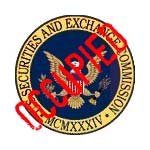Courtesy of Pam Martens
On Monday afternoon, the Dow Jones Industrial Average was trading down about 700 points. Over the next 11 minutes, it fell more than 800 points in what can only be described as a Flash Crash as the Dow abruptly recovered to pare its loss from down 1,597 points to a final close of down 1,175 points on the day. Small investors who had stop-loss orders in place saw those orders triggered and their stocks sold, only to see their stocks recover much of those losses within minutes. This was eerily reminiscent of the Flash Crashes on May 6, 2010 and August 24, 2015.
Small investors (as well as institutional investors like municipal pension funds who work for the little guy) frequently have in place standing stop-loss orders that sit on the stock exchange order books to sell a stock at a pre-determined exit price that is lower than the current market. This is meant to “stop” further losses. Once the target price of the stop-loss order is reached, the order automatically becomes a market order and is executed at where the market happens to be. In orderly markets, this would typically mean the stop-loss order would be executed at, or close to, the designated target price. In flash-crash markets, on the other hand, it’s an open invitation to be fleeced.
In the Flash Crash of May 6, 2010, the Dow plunged 998 points and then closed the day with a loss of just 348 points. The Chair of the Securities and Exchange Commission at that time was Mary Schapiro. In a speech later in the year, Schapiro revealed the devastating impact the triggering of those stop-loss orders had on investors. Speaking at the Economic Club of New York on September 7, 2010, Schapiro said this:
“A staggering total of more than $2 billion in individual investor stop loss orders is estimated to have been triggered during the half hour between 2:30 and 3 p.m. on May 6. As a hypothetical illustration, if each of those orders were executed at a very conservative estimate of 10 per cent less than the closing price, then those individual investors suffered losses of more than $200 million compared to the closing price on that day.”
On Monday, August 24, 2015 the Dow Jones Industrial Average plunged 1089 points within the first few minutes of trading. Close to half of that loss was recovered by the closing bell with the Dow losing 588 points.
…




